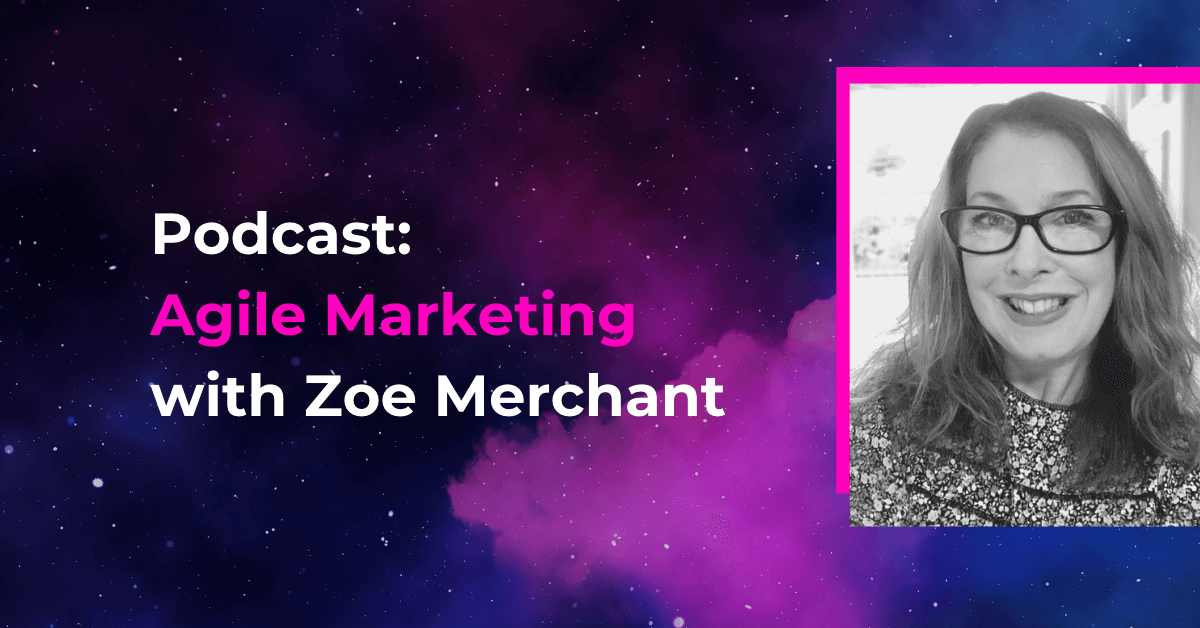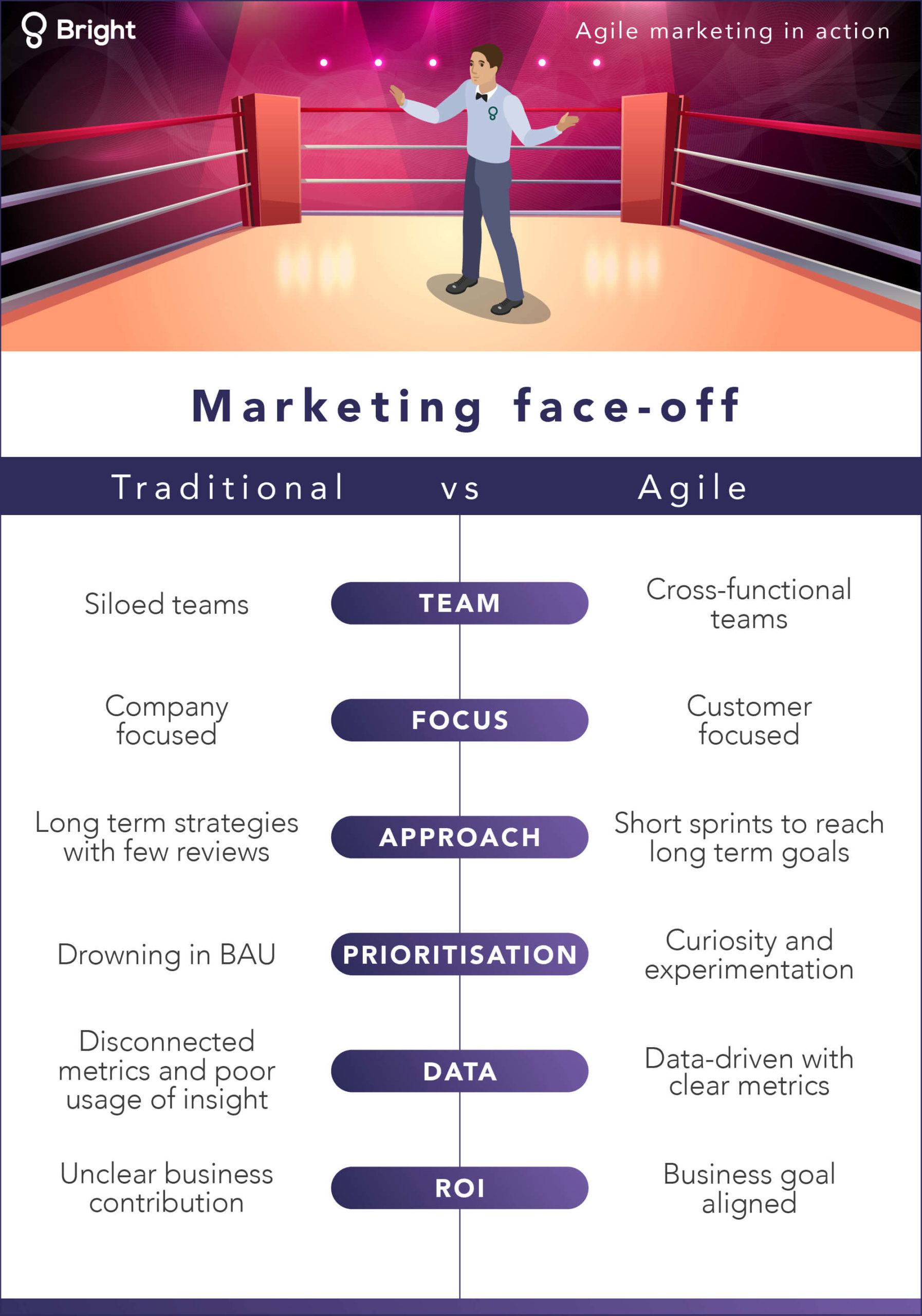By Natalie Cannatella, Content and Communications Strategist
One of the biggest marketing trends this year was the growth of agile marketing. According to the ‘3rd State of Agile Marketing Report’, agile marketing adoption went up from 32% in 2019 to 42% in 2020. Almost all of the growth is due to a reduction in the percentage of marketers identifying with the traditional waterfall model of marketing management. At Bright, agile marketing has been at the heart of our founding principles and processes since our inception. Here are five reasons why we believe agile marketing is set to grow even further in 2021.
Pandemic panic
Covid impacted pretty much every aspect of both our personal and working lives last year. Businesses in particular have faced disruption, uncertainty and a constantly changing landscape. This meant that the best marketing plans quickly went out the window as many businesses went into crisis mode. In these conditions, adopting an agile approach to marketing, where marketing departments could adapt quickly to changing circumstances, suddenly became more important than ever before. Even though we have (thankfully) now started the rollout of the first approved vaccine in the UK, the future remains uncertain and impossible to predict. For those who adopted agile marketing practices in 2020, there is certainly no going back. For those who have yet to embrace agile marketing, 2021 is the year to dive in as businesses continue to navigate their way through the pandemic and beyond.
Data is king
We live in a world where almost everything we do online is tracked, and organisations today are set up to capture volumes of data about their customers and prospects. Businesses that can fully capture, understand and utilise that data will gain a competitive edge. Data and agile marketing go hand–in–hand. Having access to real-time data – and being able to analyse it – is one of the key pillars of agile marketing. It’s an approach that focuses on making decisions that are always driven by data, and businesses looking to thrive in a post-Covid world will want to ensure they are doing this effectively.
Pervasiveness of agile
The test, learn, improve model is now well established and accepted beyond the technology team. By applying this model to marketing processes and campaigns, businesses are able to make tweaks and amendments to optimise activity based on data to cultivate continuous improvement — another reason why we think businesses are likely to extend agile practices to their marketing function in 2021.
Banish mediocrity
One of the things all businesses have had to do this year is think creatively in order to survive. This most definitely extends to the marketing department. In 2020, mediocre marketing campaigns just didn’t cut it, and in 2021, standout creative campaigns will be another tool organisations use as they try to recover from the previous year and get back to growth. Agile marketing supports teams in creating more effective standout campaigns that support your KPIs and business objectives.
Need for speed
Doing things faster, and better, than your competitors are the main ingredients for business success. Businesses are realising that agile marketing practices can significantly increase time-to-market. Getting those data-driven, creative marketing campaigns out to the market quickly, gives you that competitor-beating edge.
Are you ready to embrace agile and accelerate your marketing? Drop us an email at hello@brightinnovation.co.uk











